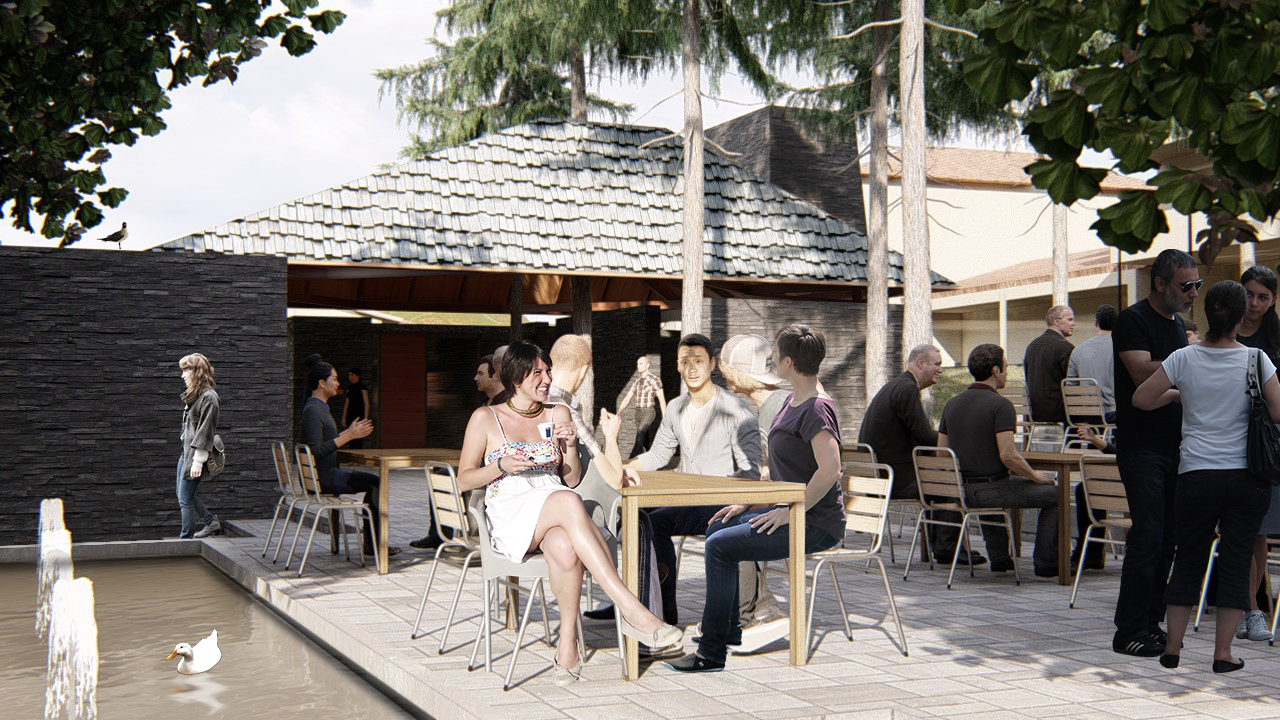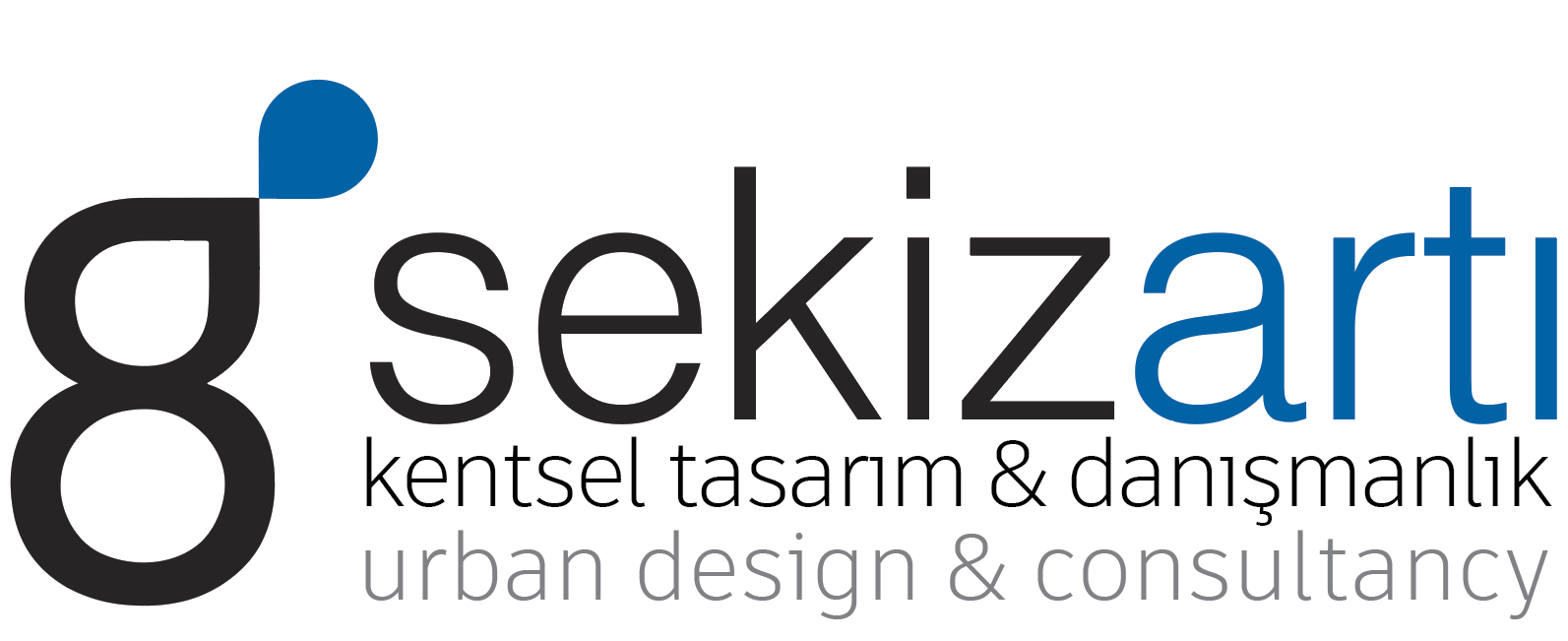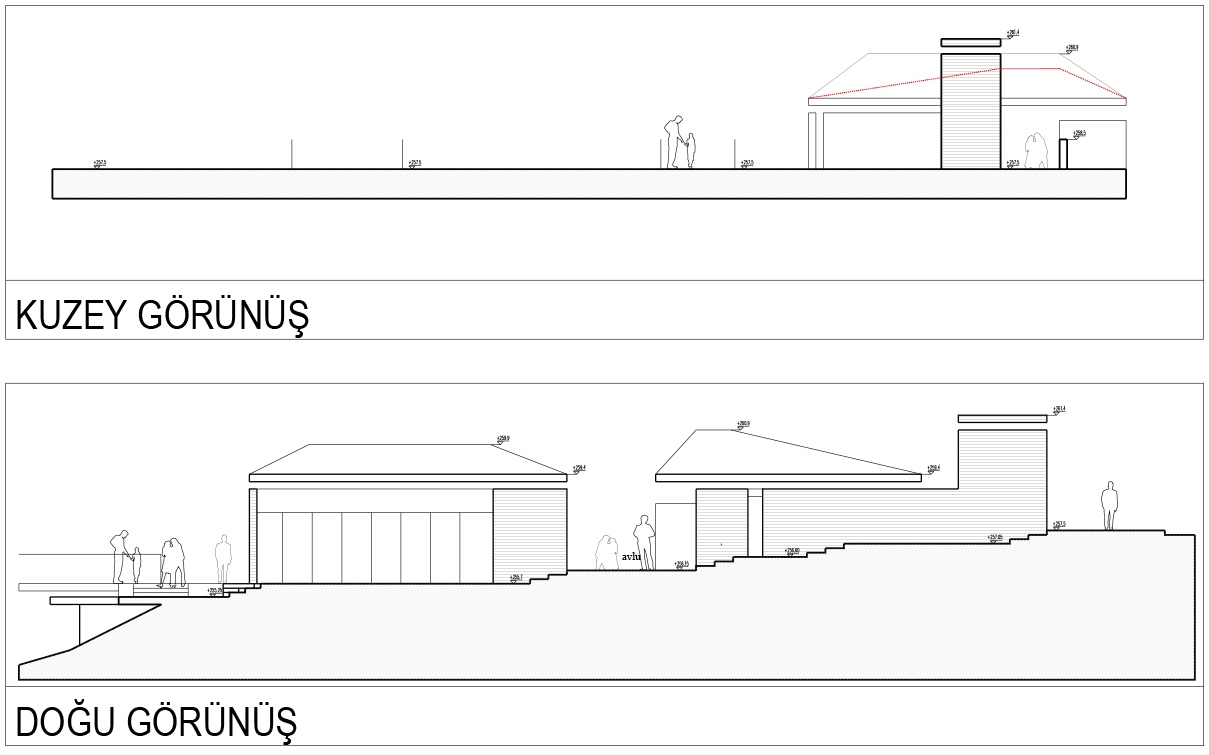Gümeli Visitor Center

Gümeli Visitor Center
The town square and the area to be created with the ground floors defining the square will be closed to vehicle traffic on special days and a local market area can be established here. In this way, visitors will be able to establish good relationships with the town and its people. These relationships are important to better understand space and nature. While the Visitor Center and its Simulation Route will provide visitors with visual and written information about the Natural Monument, they will also have the chance to have direct contact with nature thanks to the experiences they will have on the route. The Visitor Center is positioned in the most public area of the town. In this way, the center will be a place for those who live in this town rather than for those who come from outside. This sense of ownership will be the basic condition for the sustainability of this place. The students of the center, who establish relationships with the school area right next to them, are candidates to become an important part of educational life. The building aims to bring people together under a large roof. This roof is completely wooden construction, and the covering element of the roof consists of wooden tiles, as we see in the characteristics of local architecture. With these features, the building will be built with a method in which local craftsmen will be involved in the production process. Basalt, a local stone, is used on the facade of the building. Another important feature of the center is that it does not have a completely closed area in the exhibition section. In this way, the building will always remain open and will become a center where people, both local and outside the town, can visit freely, thus the building will be integrated with the ground and operating costs will be reduced considerably. The Simulation Route, which complements the Visitor Center, goes 500 meters along the valley on the opposite bank of Bulanık Creek and gives the visitor the opportunity to experience installations where they can integrate with nature and receive visual and written information about the area before going out to the Natural Area.

